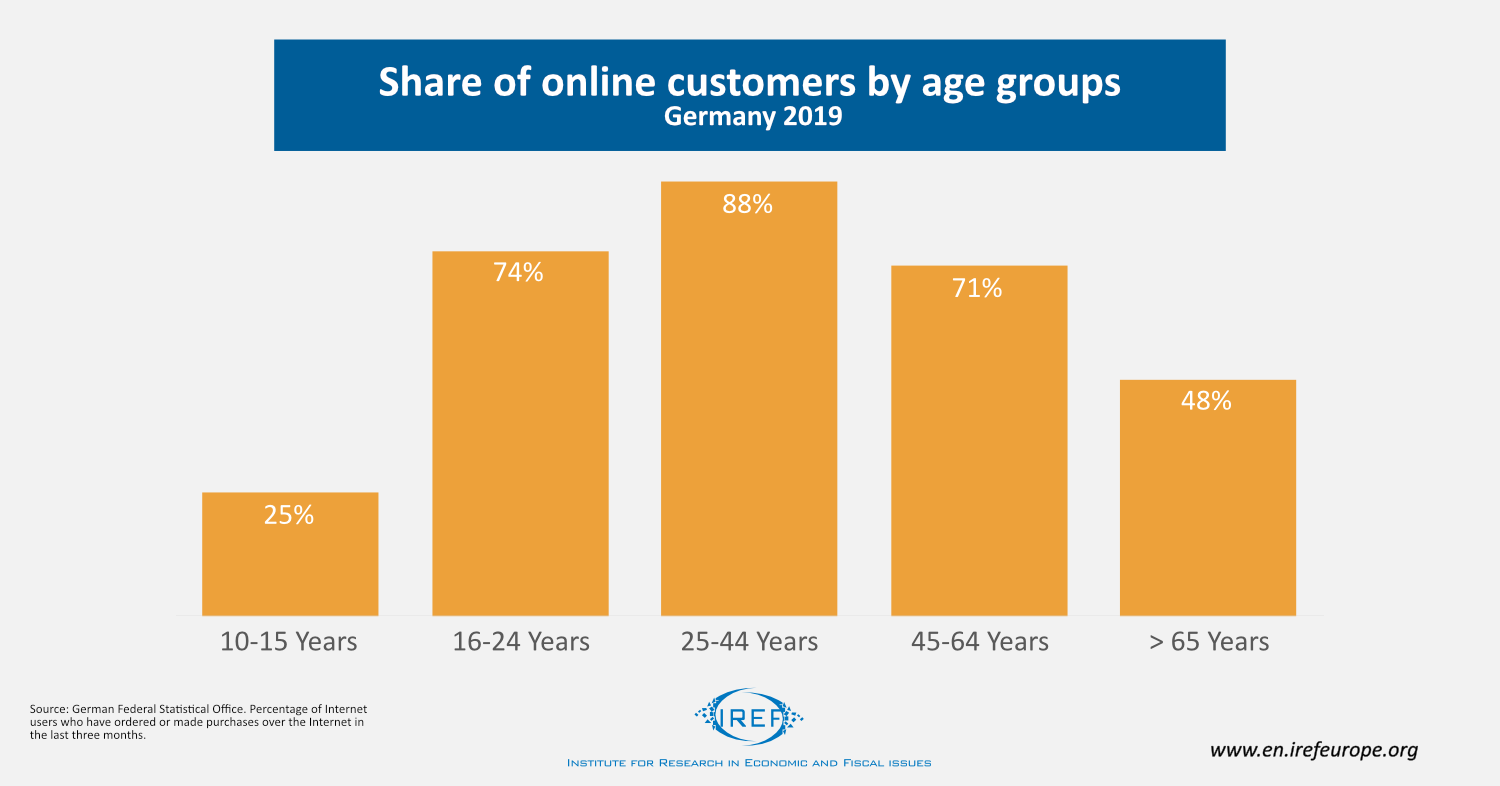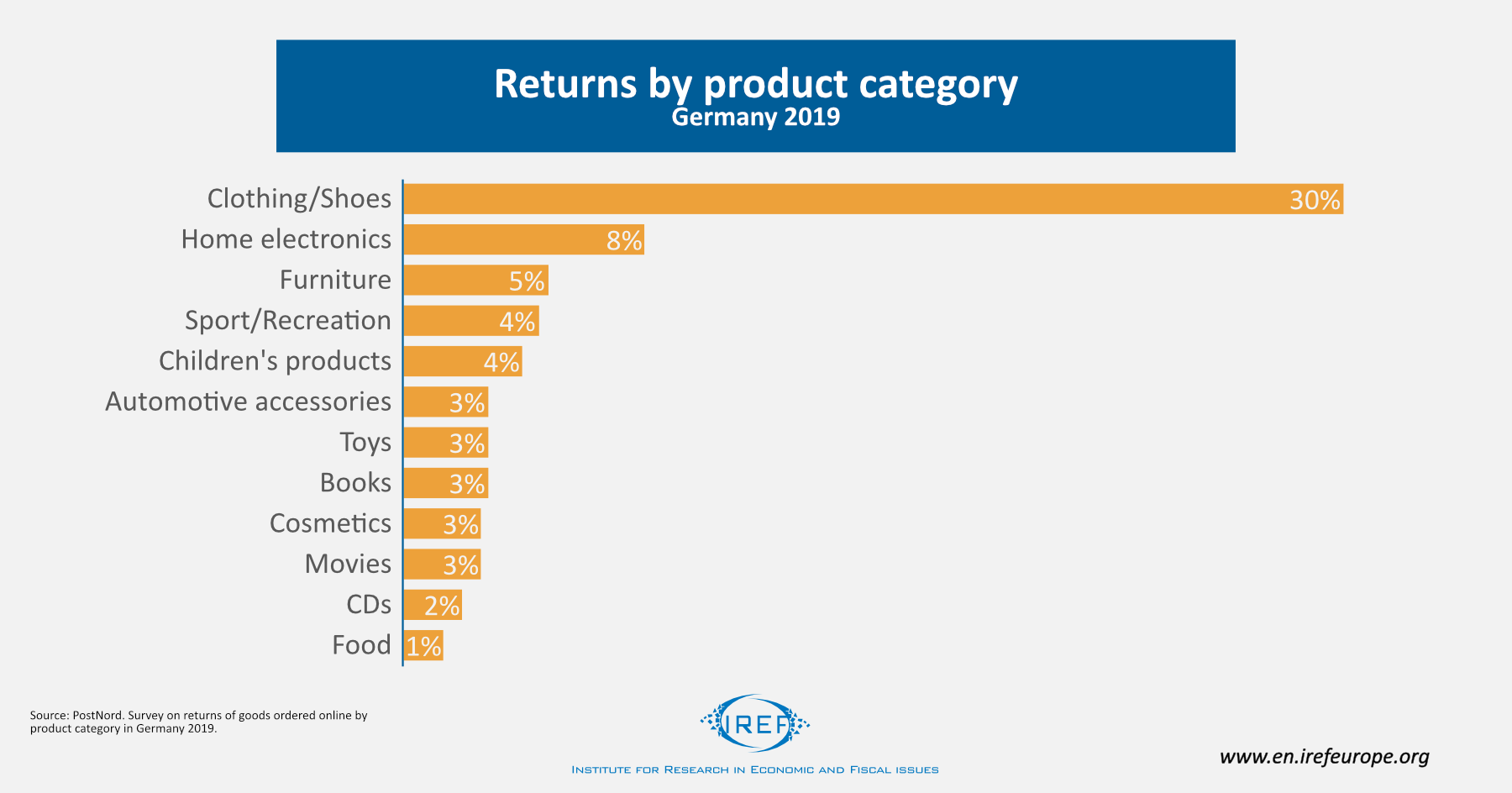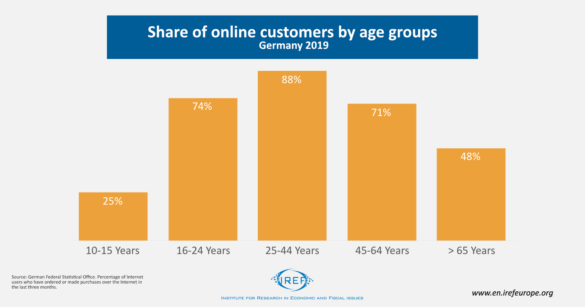Online shopping is increasingly popular. According to a survey from 2019, almost 90 percent of 25- to 44-year-olds had ordered something online during the previous three months. Even half of those aged 65 or more confessed they shopped online. However, online shopping is also criticised for damaging the climate. The Süddeutsche Zeitung, for instance, demands higher postage to protect the climate from the increasing number of parcels that need shipping due to online shopping. Die Welt also considers the possibility of raising postage charges to fight climate change. The article claims that online returns in Germany cause as many daily CO2 emissions as 2,200 cars driving from Hamburg to Moscow. So, do we have to feel bad whenever we order shoes, smartphones or diapers online? Studies have assessed the effects of online trading. They conclude that online orders do usually not cause more greenhouse gas emissions than bricks-and-mortar trade. Yet, there is potential for improvement.

Online shopping: less individual traffic
According to a Swedish study from 2016, online purchasing orders can contribute to reducing the number of times people use their car for shopping purposes. It is estimated that by 2030 online trading leads to 2% drop in CO2 emissions, compared to 2012.
Greenhouse gas emissions associated with clothes shopping depend on the distance of the consumer from their chosen shop as well as on the means of transport they prefer. According to the results of a Swiss analysis from 2018, only shopping trips using public transport have CO2 emissions which are as low as those of online purchasing orders.
Delivery methods matter
A study from 2015 examines the greenhouse gas emissions of traditional trading and of different delivery options for online shopping in the UK. Greenhouse gas emissions of bricks- and-mortar trade include not only those caused by transportation, but also those related to managing the retail facilities.
The research for the UK carefully considers all emissions that a product causes since it leaves the factory until it reaches the final customer. The analysis takes into account that online shopping can only substitute traditional shopping to a certain degree, and includes the returns and trips to the warehouses when delivery fails.
The researchers emphasise that the type of delivery is plays a key role in determining greenhouse gas emissions. The delivery of specific goods – e.g. items that do not have to be bought weekly – is best done with parcel services. Parcel delivery with DHL, Hermes and similar companies has comparatively low emissions because the distance per item is relatively short and because the same vehicle can take care of other deliveries in close proximity at the same time. For bigger orders, however, delivery using parcel services is less attractive, since they would frequently be split up in order to speed up the delivery process.
For orders between 2 and 22 articles, traditional trade is preferable if customers do not come to the shop to collect what they need, but rather have them delivered by the sellers. In this case, and unlike parcel services, the articles are usually delivered all together instead of being split up. Moreover, if local businesses deliver to their customers, the delivery mileage is usually shorter.
Since storage, sorting and logistics take up more energy and effort for small businesses than if conducted in larger logistics centres of big online companies, the efficiency advantage of such centres trumps the advantage of shorter delivery routes for larger orders.
Overall, the study suggests that the best delivery option changes according to the volume of shopping, and that each online option is preferable to traditional shopping. An earlier British study assessing the CO2 emissions of the “last mile” reached a similar conclusion. It highlights, however, that the CO2 emissions of traditional shopping improve as soon as the shopping is connected with other activities, such as commuting.
Optimising online deliveries
The empirical studies illustrate that online shopping has the potential to be more climate-friendly than a private trip to the shops, and also identify plenty of ways of doing better. For example, improved delivery and returns management could certainly contribute to cutting greenhouse gas emissions.
When parcels cannot be delivered directly, CO2 emissions increase because delivery has to be attempted again or the recipient has to make his way to a delivery point. One could reduce these wastes, for example, by announcing the approximate time of delivery in advance. In a similar vein, artificial intelligence could help to find the ideal delivery time for each customer. Local parcel boxes or smartphone-controlled doors can also help to make delivery succeed at the first attempt.
One could also be more efficient with regard to returns. If consumers take their returns to a collection point by car, CO2 emissions are 12 times as high than when returns are collected by a delivery service on its regular delivery route.

Another way of cutting emissions would be to lower the ratio of items that are returned. According to data by PostNord, only 1.3 percent of groceries are sent back. By contrast, almost every third parcel containing clothes is returned. This has a very simple reason: clothes do often not fit properly. In this industry, the main way to prevent returns would therefore be to improve information about the specific fit of an item, for example by resorting to artificial intelligence. Modern smartphones are already capable of measuring distances. Soon they could be able to figure out someone’s ideal trousers size, too.
In brief, online shopping does cause CO2 emissions. But a trip to the local shop is not free from emissions, either – also because operating such shops costs energy. Critics should therefore take a closer look. Online shopping can help protect the climate, especially when deliveries include multiple items and replace traditional shopping.





